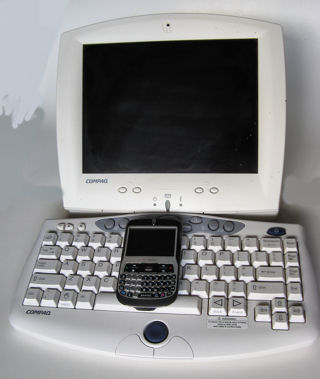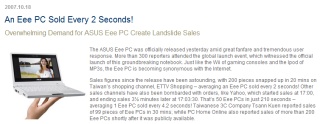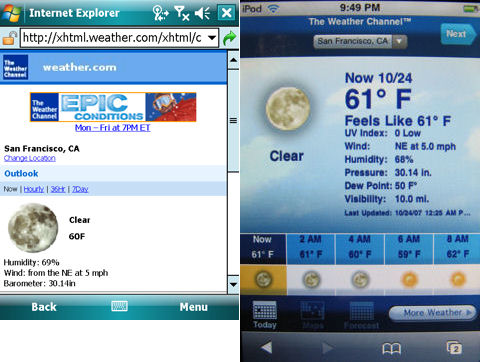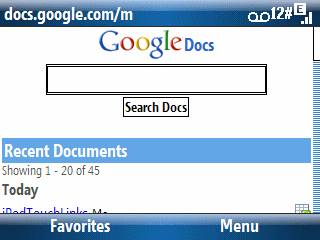
Brighthand and ZDNet both recently had blog items commenting on Microsoft reorganizing the Windows Mobile group and focusing the division on Windows Live service. I’m a little worried about this me-too strategy that seems to follow on the heels of Apple’s iPhone (and to a lesser extent iPod touch). Windows Mobile’s greatest strength has always been the rich set of client software available for it that gave it a good disconnected experience. And, what about Windows Live anyway? It is a bunch of barely connected web services that doesn’t seem to have a strategy of its own. How can it be the basis of a Windows Mobile strategy?
I hope history doesn’t repeat itself. Take a look at the photo above. See that big white thing behind the T-Mobile Dash (Windows Mobile Smartphone AKA Standard Edition)? That is not a PC. It is an MSN Companion that like Windows Mobile was based on Windows CE. Its only function was to connect to the web (by phone line or Ethernet) and was based on Interent Explorer 4. It was barely web-ready even when it was introduced though I thought it was a good first start and used it quite a bit as stand up terminal for quick web browsing. The problem is that it was orphaned and never had more that 2 firmware updates (which took a month to roll out to customers). Today, with its lack of a modern browser, it is essentially useless. Even the first Handheld PC or the earlier MS-DOS based handhelds, on the other hand, are still useful with their built-in client applications and third-party software. But, try using a GPS in your current day Windows Mobile device with only Microsoft applications and no phone service (when you are out of a service area for example). Now imagine that there were no 3rd party client-side GPS applications. What would you do?
Microsoft’s strategies have not been firing on all cylinders for the last couple of years. Their stock price and the general reception of major products like Windows Vista (Office being a rare exception) are two prominent examples. I think Windows Live needs a strategy before it can be used a strategy for Windows Mobile. Microsoft should focus on the broken aspects of Windows Mobile like ActiveSync/WMDC (Windows Mobile Device Center), email, and Office Mobile before looking at Windows Live services.



